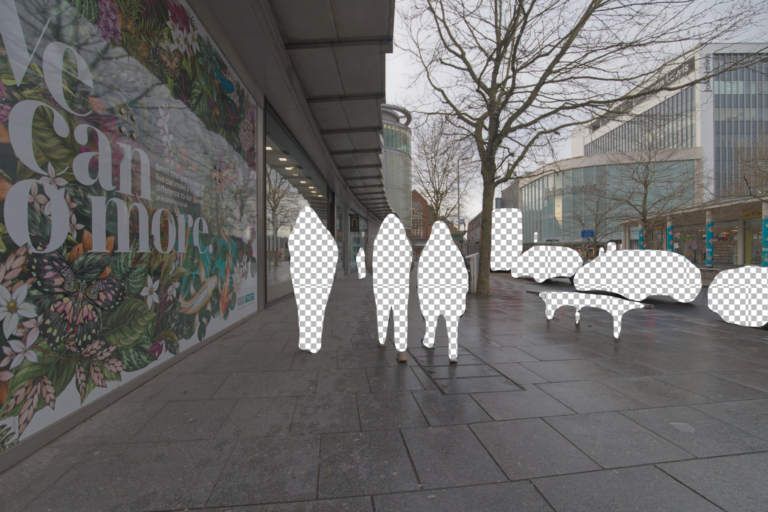Photogrammetry of the Halliggye Fogou
Introduction

The Halliggye Fogou, located within the historic landscape of Cornwall, presented a unique opportunity for methodological experimentation in photogrammetry. Undertaken during a personal holiday, this project aimed to explore recording techniques in confined and poorly illuminated environments. Despite suboptimal conditions, the endeavour provided insights into the challenges of capturing high-quality data in such spaces and with limited time and equipment available. This blog post provides an initial overview of the methodological framework, obstacles encountered, and the preliminary results of the work. In further blog posts, I will explore the challenges encountered in greater depth and propose potential solutions.
Site Context
As a prehistoric subterranean structure, the Halliggye Fogou is thought to have functioned as a storage facility, refuge, or site of ritualistic activity. More information about this site may be found here:


The architectural and environmental characteristics of the Fogou provided an ideal test case for refining photogrammetric techniques in challenging conditions. These findings are intended to inform workflows applicable to similar archaeological contexts. Such as the Underground Passages in Exeter.
Methodological Challenges
Lighting
The lack of ambient light meant that artificial sources had to be used, including a flash mounted on top of the camera. While the flash effectively illuminated tunnels close to the camera, it failed to provide sufficient illumination further away, resulting in a zebra-like pattern in the texture data (see figure below – left). Although some of these artefacts could be mitigated by post-processing (see figure below – right), they are still visible and it is not exactly clear how much this changes the colour. Possible solutions would be better lighting and a less wide-angle lens. In addition to the zebra pattern in the texture, the dark pixels in the centre of the image produced a lot of noise and fewer features that could be used for photogrammetry.



Space
The confined architecture of the Fogou required innovative approaches to equipment placement and movement to ensure comprehensive coverage of the photos. As the space is extremely tight at times, it is not possible to walk parallel to the wall and shoot straight ahead as one would normally do (even with a wide angle lens). Instead, I walked along the tunnel and took photos in the same direction (see picture below). Difficult were also the two narrow sections, as I was on holidays I did only had a limited set of clothes with me and could not crawl through and take enough photographs for photogrammetry, resulting in one hole. I did several walks at different heights and with the camera held in different directions. However, due to the angle and the bad areas in the middle of the frame, the alignment did not always work. A viable solution for alignment would be to use multiple targets if available.

Time
Conducting the recording during a family holiday imposed constraints on both time and available resources, emphasizing the importance of adaptability. Additionally, processing, analysing, and publishing the results have been challenging due to other commitments, such as my current PhD and part-time jobs.
Workflow
As mentioned earlier, my sister and I stopped at this site during a holiday in Cornwall. While on route to another location, I had enough time to capture some photographs for a photogrammetry project. Equipped with a camera, a flash, a ruler, and a colour-checker, we made the most of having the site entirely to ourselves.
To ensure comprehensive coverage, I walked along the tunnel and captured multiple series of photographs at varying heights and walking directions. This approach aimed to account for the tunnel’s unique geometry and lighting challenges. Additionally, we captured reference images for white balance and colour correction. Although the lighting conditions caused some variations due to reflections and light bouncing unevenly within the tunnel, these references should still enhance the final results compared to working without them.
Back home, a few weeks later, I began processing the images, which were all taken in RAW format to preserve maximum detail. The photogrammetry workflow included aligning the images, generating a dense point cloud, and proceeding through the standard reconstruction steps. While the initial photography and subsequent post-processing were tailored to the constraints of the site, the rest of the photogrammetry process followed standard methodologies.
Results
This section shows some screenshots and renderings of the finished photogrammetric model (in time compared to other data).



Conclusion
This preliminary study lays the groundwork for a more comprehensive documentation initiative focused on advanced photogrammetry in confined and low-light settings. Subsequent efforts will integrate these findings into broader archaeological and heritage documentation frameworks, emphasizing methodological rigor and reproducibility. Despite the challenges, I am pleased with the results achieved under the circumstances, as they offer valuable insights and a strong foundation for further work. In addition, the resulting 3D model is detailed enough to be used as documentation and a basis for further research at the site. As a preview of the data, I have uploaded a reduced 3D model to Sketchfab.
Explore a low resolution version of the photogrammetry model on Sketchfab:



